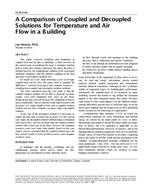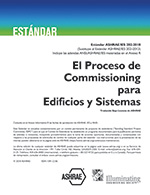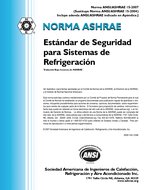Description
This paper concerns modeling and simulation of coupled heat and air flow in buildings. A brief overview of the current state in modeling this issue is included. Starting from a zonal mass balance approach, the paper describes a method used for the simultaneous solution of the associated nonlinear equations, and the solution coupling of the heat and mass conservation equation sets.
By means of a case study involving a case of strongly coupled heat and air flow, this paper aims to quantify the differences–in terms of accuracy and computer resources– resulting from coupled and decoupled solution methods.
The main conclusion from the case study is that the coupled solution method will be able to generate accurate results, even with simulation time steps of one hour. Reducing the time step will increase the computing resources used considerably, with a relatively small improvement in the accuracy. For equal length of time step a coupled solution method will use more computer resources than a decoupled solution.
In the case of the decoupled method it is necessary to reduce the time step, to ensure the accuracy. For the current case study, the decoupled solution method using a simulation time step of 360 s was less accurate than the coupled solution method with a time step of one hour. However the computer resources used were more than double. Based on the case study it may be concluded that the coupled solution gives the best overall results in terms of both accuracy and computer resources used.
Units: SI
Citation: Symposium, ASHRAE Transactions, vol. 105, pt. 2, Seattle 1999
Product Details
- Published:
- 1999
- Number of Pages:
- 8
- File Size:
- 1 file , 180 KB
- Product Code(s):
- D-7455




